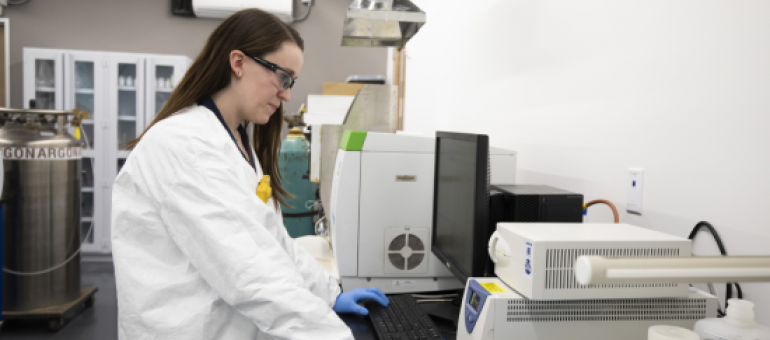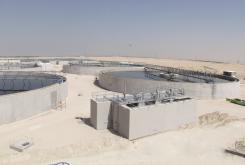Does Reverse Osmosis Treat PFAS?

Potentially harmful pollutants called PFAS are nearly everywhere, from everyday products like fast food wrappers and plastic bottles to our water supplies. In fact, PFAS have been the leading water contaminant since the 2010s.
As scientific research reveals more about the health and environmental impacts of PFAS, it has become more urgent to treat the substances through methods like reverse osmosis and activated carbon.
What are PFAS?
Per- and Poly-Fluoroalkyl Substances (PFAS) are a broad range of man-made organic molecules containing a short to long chain of carbon atoms. It’s estimated that there are more than 5,000 types of PFAS. These substances are used in many products such as pans, carpet protectors, and firefighting foam, due to their resistance to heat, water, and grease. Those properties cause PFAS to break down extremely slowly, thus garnering the name “forever chemicals.”
PFAS also persists in water. Exposure to some PFAS in the environment may be linked to harmful health effects in humans and animals (USEPA, 2022). To mitigate those negative effects, we have to filter them out of water, including wastewater that may end up becoming drinking water.
In November 2022, the Environmental Protection Agency (EPA) released a study that outlined the first year of its strategic roadmap to protect against PFAS contamination. There are multiple technologies that municipalities and water providers can leverage to treat PFAS and minimize future risk.
What is reverse osmosis?
Human cell walls act as a membrane that allows water to move through our bodies and limit the movement of salts. That natural osmosis is key to how our bodies work.
Reverse osmosis is a separation process that uses a synthetic thin film polymeric membrane specifically engineered to allow water to pass through.
How do RO systems work to treat PFAS from water?
Pumping the water through the membrane allows that filtration to happen quicker, but still keeps small bodies like PFAS from passing through the membranes.
The reverse osmosis element goes into a system that treats a water source with PFAS and filters it out to generate a permeate. All the rejected salts and PFAS get concentrated into a reject stream, often called the concentrate. According to the EPA, reverse osmosis separation is up to 99% effective at removing certain PFAS.
Think of it like keeping bugs out of a house with a window screen. Small bugs can get through the fibers of the screen, but the bigger insects stay out and the screen filters your air. Reverse osmosis membranes have openings that are microscopic. You can’t see them and even PFAS are too big to pass through, so there is no accumulation over time or clogging challenges. It continually gets flushed off to the concentrate and the membrane is just as effective after one year as it is after one day.
How does RO compare to carbon in treating PFAS?
If you’ve purchased a refrigerator within the last 15 years, you may be familiar with activated carbon. Activated carbon has absorption properties that make it a very effective material at removing things like chlorine, organics, taste, and odor. Carbon filters are used to remove those non-toxic entities from a local water supply to create better tasting water and ice.
Unlike reverse osmosis membranes, carbon filters don’t produce a concentrate. Instead, the PFAS gets absorbed and trapped in the carbon filter, which needs to be replaced every so often. Higher levels of PFAS mean you will need to replace carbon more often. Reverse osmosis, on the other hand, won’t be dictated by those levels and will filter out the PFAS regardless. The quality of water coming from carbon treatment or reverse osmosis treatment is comparable — the EPA says carbon filtration is 88-99% effective at treating certain PFAS.
In industrial settings where wastewater is treated, reverse osmosis is preferred over carbon because it treats a wide variety of PFAS and doesn’t require carbon’s frequency of replacement.
How can Veolia help you?
The most cost-effective way to treat PFAS is to not let it get there in the first place. Industrial organizations can keep it from getting in their wastewater and moving along the water continuum to drinking water in that community. Learn more about Veolia’s reverse osmosis solutions for water and process treatment.
If you work for a larger manufacturer or municipal wastewater industrial company and are interested in treating PFAS in drinking water or wastewater, contact one of our experts for more information.
If you’re a homeowner, it’s important to understand the source and quality of your drinking water and if even low levels of PFAS are a concern in your drinking water. If you’re on a private well instead of a public system, you may want to consider PFAS testing for periodic evaluation. For added protection, you can install carbon filtration or reverse osmosis for your drinking and cooking water. Many local water suppliers and big box warehouses sell reverse osmosis and carbon systems and can recommend a plumber to install it. Learn more about PFAS with the latest information from the EPA.







